Supreme Court Orders New Trial For Death Row Inmate Due To Tainted Jury
The Supreme Court ordered a new trial in the case of a Mississippi defendant whose trial was tainted by a prosecutor who routinely struck black jurors from the jury pool.
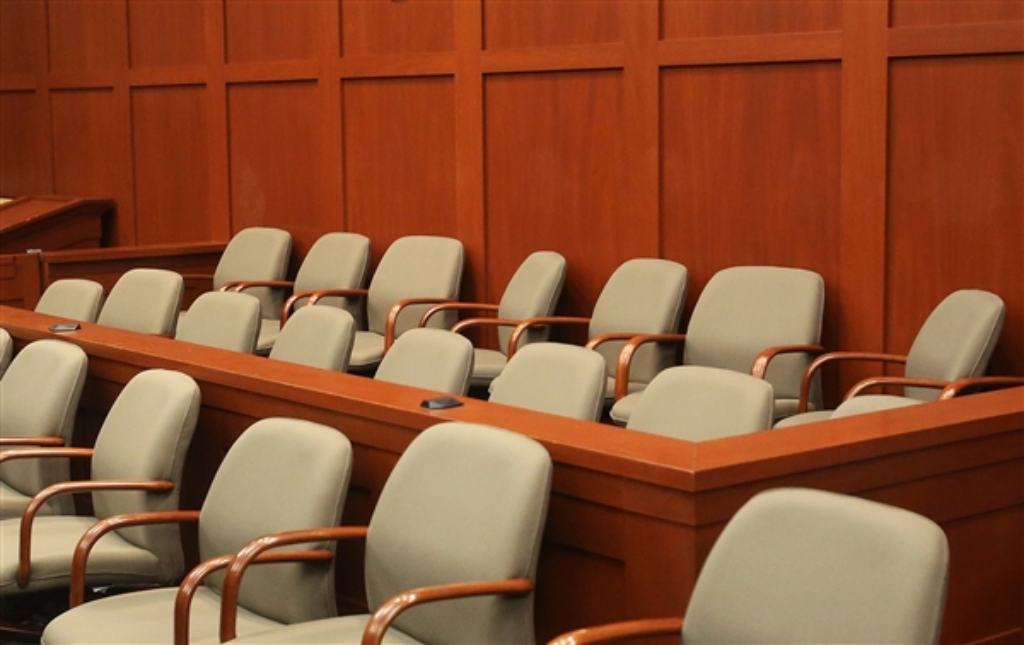
On Friday, the Supreme Court reversed the death sentence of a Mississippi man and remanded his case on the ground that the prosecutor in the case had unconstitutionally excluded African-Americans from the jury:
WASHINGTON — Doug Evans, a white prosecutor in Mississippi, has spent decades trying to convict Curtis Flowers, a black man, of the 1996 murders of four people inside a furniture store. Over the course of six trials, Mr. Evans relied on a signature tactic: he worked diligently to keep black people off Mr. Flowers’s juries.
The sixth time, Mr. Flowers was convicted and sentenced to death. But he appealed and eventually the case reached the Supreme Court in a case that attracted a great deal of attention, including being featured on a season-long podcast as well as in episodes of a documentary series.
In a lopsided decision, the Supreme Court ruled on Friday that Mr. Evans had violated the Constitution. Only two of the court’s most conservative members — Justices Clarence Thomas and Neil M. Gorsuch — dissented. And writing the majority decision was another of the court’s conservatives, its newest — Justice Brett M. Kavanaugh, in perhaps his most significant role on the court since he joined it last fall after an unusually bitter confirmation battle which included the fervent opposition of Democrats.
As is customary, Chief Justice John G. Roberts Jr. gave no reason for assigning the majority opinion to Justice Kavanaugh. But the high-profile assignment may have been prompted by Justice Kavanaugh’s longstanding interest in the issue. When he was a law student at Yale, Justice Kavanaugh wrote an article in The Yale Law Journal calling for vigorous enforcement of a 1986 Supreme Court decision barring race discrimination in jury selection.
So it was Judge Kavanaugh who felt the sting of his fellow conservatives, who called his opinion “manifestly incorrect.”
“If the court’s opinion today has a redeeming quality,” Justice Thomas wrote, “it is this: The state is perfectly free to convict Curtis Flowers again.”
In ruling for Mr. Flowers, Justice Kavanaugh said he was merely applying settled legal principles. “We break no new legal ground,” he wrote. In a concurring opinion, Justice Samuel A. Alito Jr. wrote that the case was “likely one of a kind.”
Justice Kavanaugh said Mr. Evans had run afoul of one of the Constitution’s most basic commands. “Equal justice under law requires a criminal trial free of racial discrimination in the jury selection process,” he wrote.
(…)
The court’s decision turned on the scope of a 1986 decision, Batson v. Kentucky, in which the court carved out an exception to the centuries-old rule that peremptory challenges during jury selection — ones that do not require giving a reason — are completely discretionary and cannot be second-guessed.
But the court ruled that there was one exception, and it was race. Lawyers accused of discriminating on the basis of race in jury selection, the court said, must provide a different explanation.
On Friday, Justice Kavanaugh rejected Mr. Evans’s reasons and cleared the way for a seventh trial of Mr. Flowers should prosecutors wish to pursue one. Mr. Flowers is likely to remain in state custody in the meantime.
Justice Thomas, in a part of his dissent in which he spoke only for himself, wrote that he had profound doubts about whether the Batson decision had been correctly decided in the first place.
Justice Kavanaugh had no such doubts. He said Batson required that Mr. Flowers’s conviction be overturned for several reasons, starting with Mr. Evans’s history.
In Mr. Flowers’s first four trials, held between 1997 and 2007, Mr. Evans used all 36 of his peremptory challenges to strike black potential jurors. Three of those trials ended in convictions reversed on appeal, and one in a mistrial.
“The state’s actions in the first four trials necessarily inform our assessment of the state’s intent going into Flowers’s sixth trial,” Justice Kavanaugh wrote. “We cannot ignore that history. We cannot take that history out of the case.”
Official court records do not show the racial makeup of the jury pool for the fifth trial, in 2008, but the jury itself included nine white and three black people. It deadlocked, and the judge declared a mistrial.
At the sixth trial, the one directly at issue in the Supreme Court case, Flowers v. Mississippi, No. 17-9572, Mr. Evans accepted the first black prospective juror and struck the next five.
“The state’s decision to strike five of the six black prospective jurors,” Justice Kavanaugh wrote, “is further evidence suggesting that the state was motivated in substantial part by discriminatory intent.”
(…)
During jury selection, Mr. Evans questioned black prospective jurors particularly closely, asking them an average of 29 questions each. He asked the 11 white jurors who were eventually seated an average of one question each.
Justice Kavanaugh said that pattern was also problematic. “One can slice and dice the statistics and come up with all sorts of ways to compare the state’s questioning of excluded black jurors with the state’s questioning of the accepted white jurors,” he wrote. “But any meaningful comparison yields the same basic assessment: The state spent far more time questioning the black prospective jurors than the accepted white jurors.”
In dissent, Justice Thomas responded that both the prosecution and defense asked more questions of the potential jurors they sought to exclude. “Moreover,” he wrote, “the majority forgets that correlation is not causation.”
The jury at the sixth trial, made up of one black and 11 white jurors, convicted Mr. Flowers and sentenced him to death. The Mississippi Supreme Court affirmed the conviction and sentence, accepting Mr. Evans’s explanations for his latest strikes.
Mr. Evans said he excluded black potential jurors for a variety of reasons including that they knew witnesses or members of Mr. Flowers’s family, had been sued by the furniture store where the murders took place, had qualms about the death penalty or had turned up late for jury selection.
Justice Kavanaugh said that some of those reasons were false and that Mr. Evans did not ask detailed questions of white jurors with comparable connections to the case.“When considered with other evidence of discrimination,” Justice Kavanaugh wrote, “a series of factually inaccurate explanations for striking black prospective jurors can be telling. So it is here.”
Amy Howe has more at SCOTUSBlog:
Kavanaugh’s opinion cited four facts that, when considered together, warrant reversal of Flowers’ conviction. First, Kavanaugh looked back at Flowers’ first four trials and observed that the “numbers speak loudly”: In the first four trials, Evans “tried to strike all 36” black prospective jurors. “The State’s relentless, determined effort,” Kavanaugh concluded, “to rid the jury of black individuals strongly suggests that the State wanted to try Flowers before a jury with as few black jurors as possible, and ideally before an all-white jury.” Such a history, Kavanaugh stressed, cannot be ignored when considering Evans’ intent going into Flowers’ sixth trial.
At Flowers’ sixth trial, Kavanaugh continued, Evans struck five of the six prospective black jurors. Kavanaugh acknowledged that Evans allowed one black juror to sit on Flowers’ jury, but he noted that in a 2005 case the Supreme Court suggested that a Texas prosecutor might have accepted a black juror to camouflage a general opposition to seating black jurors. “The overall record of this case,” Kavanaugh wrote, “suggests that the same tactic may have been employed here,” creating more evidence that Evans intended to discriminate against black jurors.
Before striking the five prospective black jurors, the prosecution asked them an average of 29 questions, compared with just one question for each of the white jurors who was seated on the jury. “One can slice and dice the statistics and come up with all sorts of ways to compare” the prosecution’s questioning of black and white jurors, Kavanaugh acknowledged. “But any meaningful comparison yields the same basic assessment: The State spent far more time questioning the black prospective jurors than the accepted white jurors.” Kavanaugh conceded that prosecutors can ask prospective jurors questions to “investigate the relationships of jurors to the victims, potential witnesses, and the like.” But the Supreme Court’s cases have explained that prosecutors might ask a lot of questions to find answers that will give them excuses that do not rely on race to strike black jurors; if they don’t ask white jurors the same questions, prosecutors can “avoid being accused of treating black and white jurors differently.” So although asking black jurors more questions than white jurors does not, standing alone, violate the Constitution, it can “supply a clue that the prosecutor may have been seeking to paper the record and disguise a discriminatory intent.”
Along these lines, Kavanaugh wrote, the decision to strike Carolyn Wright, a prospective black juror, was largely motivated by an intent to discriminate. The prosecution said it struck Wright because “she knew several defense witnesses and worked at Wal-Mart where Flowers’ father also worked.” But, Kavanaugh pointed out, prosecutors did not ask the same kinds of detailed follow-up questions of three prospective white jurors with connections to individuals involved in the case. At least in this case, in light of the “whole picture,” the failure to do so “requires skepticism”: “We cannot just look away,” Kavanaugh emphasized.
(…)
Justice Clarence Thomas dissented, in an opinion that was joined in part by Justice Neil Gorsuch. Thomas argued that the Supreme Court should never have agreed to review Flowers’ case in the first place. He alleged that the case didn’t meet the justices’ traditional criteria for granting review, and he seemed to suggest that the justices might have taken up the case because it hailed from the south – which, quoting an opinion from Justice Antonin Scalia, he described as a “familiar object[] of the Court’s scorn” – or because of the media attention that the case had garnered. But in any event, Thomas continued, prosecutors had good reasons – that had nothing to do with race – for striking the five black jurors at Flowers’ final trial. And to the extent that the court relied on the prosecution’s conduct at Flowers’ earlier trials, Thomas added, that story “might make for an entertaining melodrama, but it has no basis in the record.”
In the part of his dissent that Gorsuch did not join, Thomas criticized the court’s decision in Batson as “suspect when it was announced” and something about which he is “even less confident now.” Thomas reasoned that Batson gives a “windfall to a convicted criminal” who has not actually been injured – because he was not the juror who was the victim of discrimination – and therefore should not be able to challenge the juror’s exclusion. More broadly, Thomas complained, the system of peremptory challenges rests on the idea that a lawyer should be able to remove a potential juror from the jury pool, without providing an explanation, based on her gut feeling that the potential juror would not be sympathetic to her client’s case. By focusing on an individual juror’s rights, and requiring lawyers to provide a reason for their decision to strike a juror, Batson “is wholly contrary to the rationale underlying peremptory challenges,” Thomas concluded.
Thomas finished with blistering words for his colleagues in the majority, writing that if the court’s “opinion today has a redeeming quality, it is this: The State is perfectly free to convict Curtis Flowers again. Otherwise the opinion distorts our legal standards, ignores the record, and reflects utter disrespect for the careful analysis of the Mississippi courts. Any competent prosecutor would have exercised the same strikes as the State did in this trial.” And, Thomas added, “although the Court’s opinion might boost its self-esteem, it also needlessly prolongs the suffering of four victims’ families.”
The fact that Kavanaugh ended up writing the majority opinion in this case, or indeed that the majority in this case included all but two of the court’s conservatives joining with the court’s liberals may strike some as unusual, but it’s not that unusual for the high court, especially on an issue such as this where the answer seems to be so self-evident based on existing court precedent. As noted, one reason that Chief Justice Roberts assigned this case to him may be the fact that Kavanaugh wrote a law review article on the issue when he was a student at Yale Law School and one about which he has continued to express interest. Additionally, this case is perhaps the highest profile case so far that Kavanaugh has written an opinion for the majority and he wanted to give the Court’s newest Justice an opportunity to get his feet wet in a high profile case.
As far as the issue itself goes, it’s almost remarkable that it made it this far through the legal system given that the outcome seems to be so self-evident. In 1986, the Court ruled in Batson v. Kentucky that it was unconstitutional for a prosecutor to use their peremptory challenges to exclude jurors for reasons based on race. In this case, it was clear from the record that, at each of the five jury trials against Flowers that actually went to verdict (as noted the fifth trial ended in a mistrial), the prosecutor disproportionately used his peremptory challenges to strike African-Americans from the jury (it should go without saying that Flowers himself is African-American.)
What makes this case noteworthy, I suppose, is the fact that this was happening in a case that was being tried some 30 years after the Batson case was decided. In that time, the Court’s decision has come to become an accepted part of the criminal law and prosecutors have, generally speaking, careful and circumspect in striking jurors so as not to violate the Defendant’s Batson rights. The fact that this prosecutor in what appears to be a small rural community in Mississippi, along with the Judge who presided over the case, acted in this manner demonstrates that there remain many parts of this country where the lessons of the Civil Rights Era clearly haven’t been learned.
The prosecutor attempted to justify these exclusions on other grounds, but Justice Kavanaugh and the majority found, correctly I believe based on the facts as set forth in the opinion, that these explanations were not sufficient and in some cases appeared to be either completely untrue or simply not plausible. Based on those facts, Kavanaugh states, it’s clear that the jury panel that tried Flowers, especially in his most recent sixth trial, was tainted by the improper exclusion of jurors due to their race. Once the court reached that conclusion, the disposition of the case was clear. The conviction is void and, if it chooses, the authorities must now try Flowers for the seventh time.
As noted, there were only two dissenters in the case, Justices Thomas and Gorsuch. The part of the dissent in which Gorsuch joined, which argued that for the most criticized the Court for accepting the case for review, to begin with. Leaving that argument aside, Thomas goes on in the part of the dissent that Gorsuch did not join to argue that Batson itself was not properly decided because the defendant in a criminal case is not the victim of the discriminatory action by the prosecutor. Instead, the victim is the juror who was accused.
This is, to say the least, a bizarre argument for several reasons. First of all, Thomas’s argument completely ignores the fact that a jury selection process tainted by racial bias quite clearly infringes on a defendant’s Sixth Amendment right to a trial by an “impartial jury” due to the fact that the prosecutor was clearly acting with an intention of keeping people off the jury for no reason other than the color of their skin. Second, the idea that only the excluded juror(s) have a claim against a prosecutor in this type of situation is absurd given the fact that it would be impossible to determine what damage the prospective juror would have suffered and that the intent of the discriminatory action on the prosecutor’s part is clearly meant to be gaining an advantage over the Defendant. Both prosecutors and defendants are free to use their peremptory challenges for any other reason, but using them to exclude people based solely on their race is obviously improper, and doubly so in a case where the Defendant is African-American.
Here’s the opinion:
Flowers v. Mississippi by on Scribd

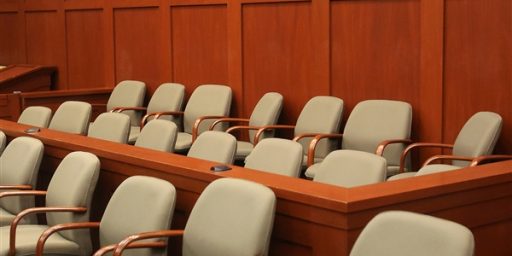
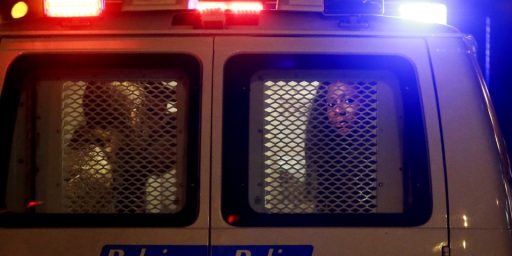
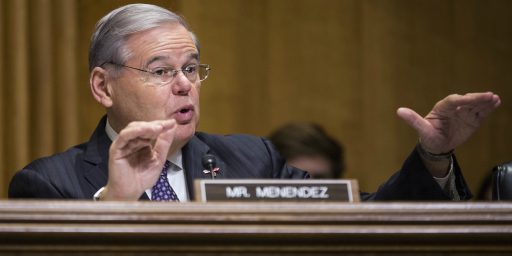

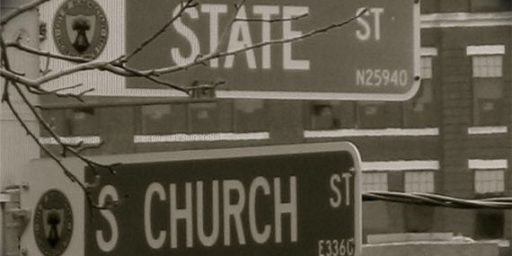
@Doug, you may have addressed it above, but does this open a path to appeal for any African-American defendant prosecuted and convicted by this prosecutor?
First, I’m glad that Kavanaugh and Gorsuch sided with the majority.
Second, is it just me or does Thomas sound unhinged? I wonder if he’s always been this out-there but we didn’t know because he mostly kept his mouth shut.
@michael reynolds:
It would depend on the facts of each case and on whether or not they have an avenue of appeal at this point.
@MarkedMan:
Gorsuch joined in part of Thomas’s dissent, just not the part about the argument against Batson.
@Doug Mataconis: Thanks for the correction. I read too quickly.
Then, it is distressing that Gorsuch is acting as I would expect a Trump appointee to: partisan and racist.
@MarkedMan:
To be fair I would argue that the arguments that the part of the dissent that Gorsuch signed on to raise reasonable points regarding the facts of the case.
Gorsuch didn’t join in the loopy part of the dissent that I noted regarding Thomas’s out-of-left-field position on the Batson case.
This in itself appears to be giant problem. WTF?
At some point (long before the sixth attempt) someone should have called this off.
Serious question: How long did Flowers spend in jail before finally being convicted?
Based on all his behavior on the bench, I think we have to conclude that when Clarence Thomas complained about a “high-tech lynching” in his confirmation hearings, he was mostly upset about the technology.
He is just willfully blind to obvious racism.
Gorsuch is quite the charmer too.
I strongly suspect that Roberts wants to rehabilitate Kavanaugh after the confirmation hearings, and try to make the court appear less partisan, and that this played a large part in Kavanaugh being assigned to write the opinion.
Or rather, he doesn’t mind if black people are lynched as long as it isn’t him…perhaps he would gladly bring the noose…
Can we get the un-garbled version of this sentence? I’m curious to know what Gorsuch’s grounds for dissent were. Was it a “lack of standing” argument?
@Gustopher:
Yes, Roberts is highly motivated by appearances, especially his own.